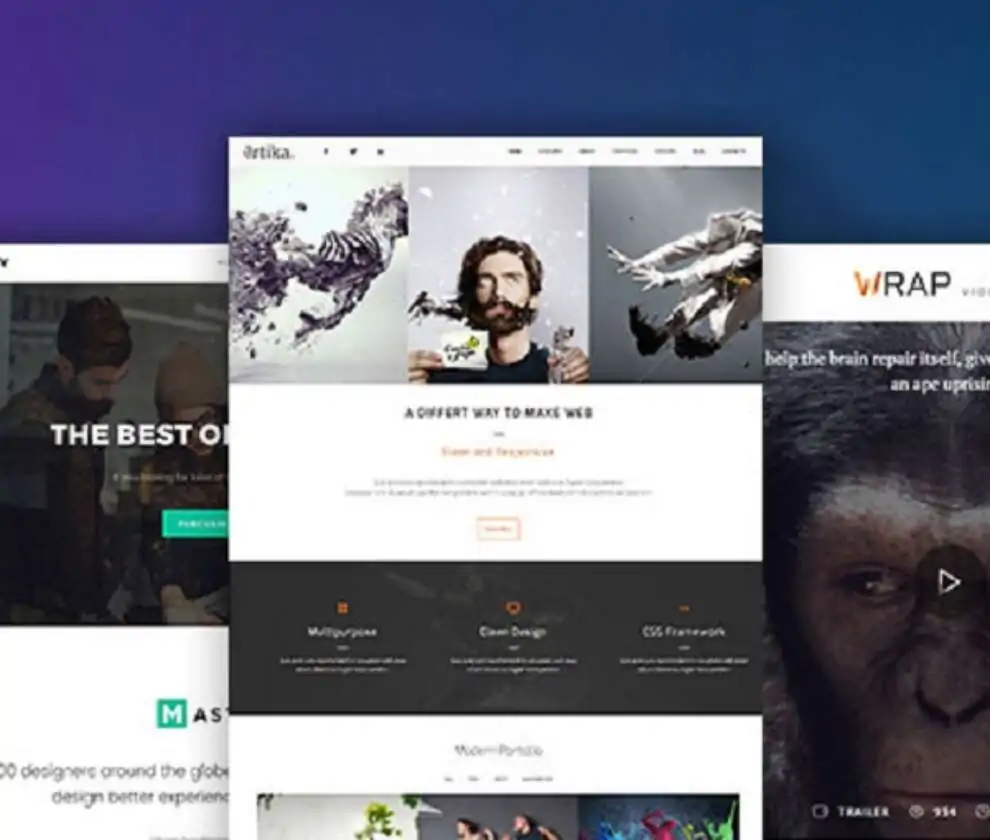
Creative Web Design Trends Shaping the Future of the Internet
The internet has never stood still. Every year, websites evolve from being simple digital spaces into immersive worlds that reflect creativity, emotion, and innovation. Today, we are witnessing an era where creative web design is not just about aesthetics but about storytelling, engagement, and experience. The future of the internet is being shaped by designers who think beyond color palettes and typography, by those who understand that a website is an expression of identity and imagination. Imagine visiting a site that feels like walking into a beautiful gallery. The visuals move with you, the text responds to your curiosity, and every click feels personal. That is the essence of creative website design in the modern age.
It’s about blending art with technology, creating a seamless experience that speaks directly to users’ emotions. People are no longer impressed by static pages or predictable layouts. They crave something memorable. A design that surprises them. An interaction that makes them pause and think. As digital experiences continue to evolve, designers are experimenting with bold concepts, interactive storytelling, and motion elements that make websites feel alive. For anyone passionate about building digital experiences, learning from creative web design ideas, exploring creative website design examples, or even enrolling in a creative website design course can open doors to limitless possibilities. This is the time to push boundaries, to discover what the web can truly become when creativity takes the lead.
1. Immersive Storytelling Through Creative Web Design
The future of web design lies in emotion. Modern websites are now created as digital stories that unfold as users scroll. From parallax scrolling effects to dynamic animations, every visual choice serves a narrative purpose. Designers are finding ways to guide visitors through journeys rather than pages. This approach transforms websites into interactive stories that connect with people on a deeper level.
2. Minimalism That Speaks Volumes
Less is truly becoming more. The most effective creative designs today use simplicity to communicate powerfully. Clean layouts, generous white space, and limited color palettes help visitors focus on what truly matters. This style enhances both usability and beauty. By combining minimalism with thoughtful creativity, designers are crafting digital spaces that feel calm, clear, and inspiring.
If you study top 10 creative websites, you will notice many of them use minimal structures but still create emotional impact through movement, contrast, and tone.
3. Interactive and Personalized Experiences
Websites are no longer static screens. They are living experiences that respond to each visitor’s behavior and interests. Interactive content, motion effects, and user-driven navigation are becoming essential. Personalized design elements, such as greeting users by name or adapting layouts based on preferences, are redefining engagement. This level of customization requires creativity at its core. Designers must think beyond visuals and understand how people interact with technology. Those who master this skill are the ones shaping tomorrow’s digital world.
4. Bold Typography and Expressive Fonts
Typography is now being used as a form of art. Large, expressive fonts with unique styles are taking center stage in modern websites. They not only capture attention but also help communicate the personality of a brand or creator. When used thoughtfully, bold typography can become a storytelling element on its own. Exploring creative website design templates can be a great way to see how typography is integrated with imagery and motion to create dynamic, visually rich experiences.
5. Motion and Micro Animations
Subtle movement has the power to make a website feel alive. Small animations that react to user actions, such as hovering or clicking, bring a sense of playfulness and interaction. These micro animations enhance usability and guide visitors without overwhelming them. Designers are also experimenting with video backgrounds and animated transitions to add emotional depth. The goal is to make users feel like they are part of the experience, not just observers.
6. Sustainable and Eco-Friendly Design
Digital sustainability is an emerging trend that focuses on reducing the carbon footprint of websites. Designers are becoming aware that every animation, image, and server request consumes energy. To create a more sustainable internet, web professionals are optimizing site performance, using lighter visuals, and designing with intention. This mindful approach aligns with the idea of responsible creativity, where design serves both people and the planet.
7. 3D Elements and Virtual Experiences
Advances in technology have made 3D design accessible to web creators everywhere. With modern tools, designers can now build interactive 3D visuals that respond to users’ movements. These features make websites feel more immersive, especially for industries related to art, fashion, and gaming. If you look at creative web design examples online, you will notice how 3D elements are being used to tell stories in ways that flat graphics never could. It’s the next step in visual storytelling.
8. Voice and AI Integration
As voice assistants and artificial intelligence become part of everyday life, web designers are exploring how these technologies fit into user experience. Voice navigation allows users to interact with sites hands-free, while AI can analyze user behavior and suggest personalized content. For designers, this trend presents new challenges but also exciting opportunities to blend creativity with advanced technology. It shows how the future of web design is as much about intelligence as it is about imagination.
9. Inclusive and Accessible Creative Web Design
Creativity should never exclude anyone. One of the most inspiring trends in modern web design is the growing focus on accessibility. Designers are learning how to make sites that everyone can use, regardless of ability or device. Color contrast, readable typography, and clear navigation all play a role. Taking a creative web design course that focuses on accessibility helps designers combine artistry with empathy. It ensures that every visitor feels seen and valued.
In the end, the future of the internet will not be defined by technology alone but by creativity that shapes how we connect, learn, and feel. From immersive storytelling to sustainable design, every trend points to one truth: people crave meaning and beauty in their digital experiences. Exploring creative web design templates, studying top 10 creative websites, or engaging with creative website design courses can inspire anyone to see design not just as a profession but as a form of expression. The web is our collective canvas, and its future belongs to those who dare to create boldly, think differently, and design with heart.




